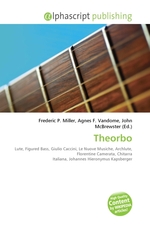Theorbo
Frederic P. Miller, Agnes F. Vandome, John McBrewster
бумажная книга
Please note that the content of this book primarily consists of articles available from Wikipedia or other free sources online. A theorbo (Italian: tiorba, also tuorbe; French: theorbe, German: Theorbe) is a plucked string instrument. As a name, theorbo signifies a number of long-necked lutes with second peg-boxes, such as the liuto attiorbato, the French theorbe des pieces, the English theorbo, the archlute, the German baroque lute, the angelique or angelica. The etymology of the name tiorba has not yet been explained. It is hypothesized that its origin might have been in the Slavic or Turkish "torba", meaning "bag" or "turban". Theorboes were developed during the late sixteenth century, inspired by the demand for extended bass range for use in opera developed by the Florentine Camerata and new musical works based on basso continuo, such as Giulio Caccini's two collections, Le nuove musiche (1602 and 1614). Musicians adapted bass lutes (c.80+ cm string length) with a neck extension to accommodate open (i. e. unfretted) bass strings, called diapasons or bourdons.
Данное издание не является оригинальным. Книга печатается по технологии принт-он-деманд после получения заказа.


